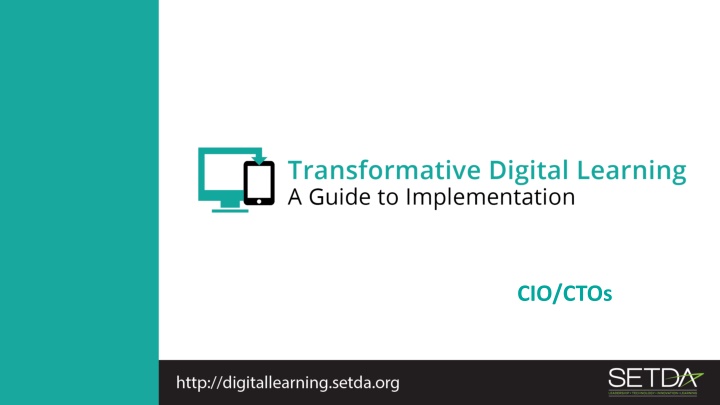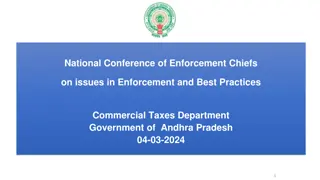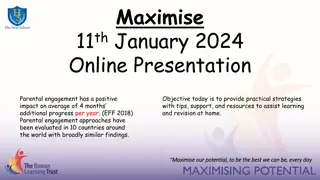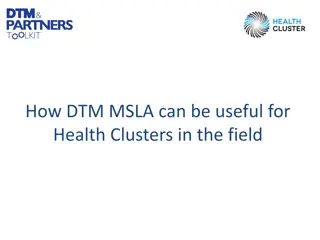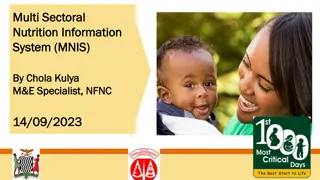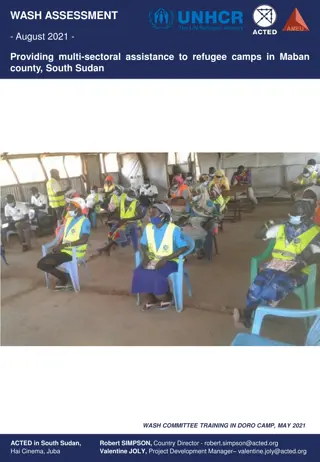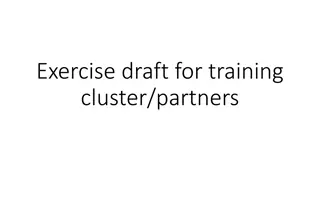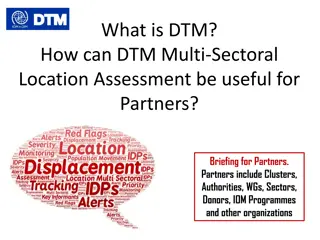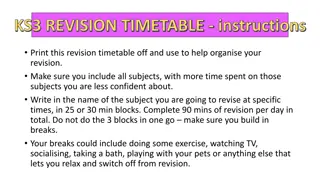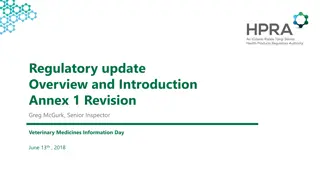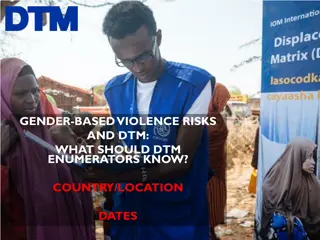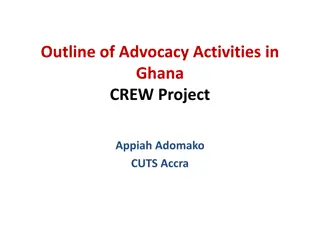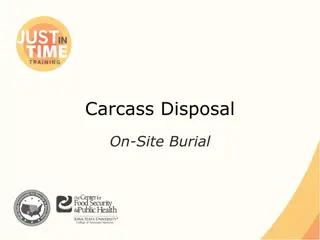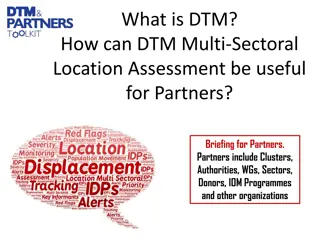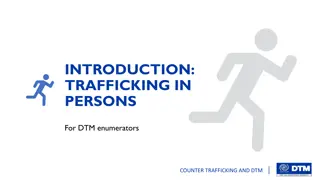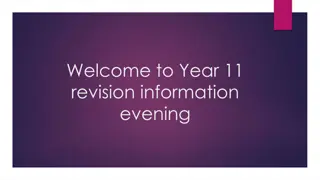DTM Sectoral Questions Revision for Site Assessment
This document discusses the purpose and methodology of revising DTM sectoral questions for site assessment within the WASH cluster. It explains the role of DTM in providing valuable data for global clusters and governments, emphasizing the importance of engagement with data users to ensure collected data meet their needs. The presentation outlines key informants, DTM operations overview, methodology, and limitations of DTM site assessments. It also explores the involvement of clusters in the sectoral data revision process and the types of key informants involved in site assessments.
Download Presentation

Please find below an Image/Link to download the presentation.
The content on the website is provided AS IS for your information and personal use only. It may not be sold, licensed, or shared on other websites without obtaining consent from the author.If you encounter any issues during the download, it is possible that the publisher has removed the file from their server.
You are allowed to download the files provided on this website for personal or commercial use, subject to the condition that they are used lawfully. All files are the property of their respective owners.
The content on the website is provided AS IS for your information and personal use only. It may not be sold, licensed, or shared on other websites without obtaining consent from the author.
E N D
Presentation Transcript
Learning in the Digital Age Technology is an essential component of learning today. Students can Create content Interact with experts Collaborate with peers
Federal Policy Shift Every Student Succeeds Act (ESSA) acknowledges technology s role in revolutionizing learning Includes definitions for digital learning and blended learning References technology throughout the legislation
Federal Policy Shift National Education Technology Plan (NETP) calls for a revolutionary transformation rather than evolutionary tinkering Provide engaging and powerful learning experiences by leveraging technology
Federal Policy Guidance High-quality professional development to personalize learning and improve academic achievement Build technological capacity and infrastructure Innovative blended learning projects Provide students in rural, remote, and underserved areas with the resources to benefit from high-quality digital learning opportunities Deliver specialized or rigorous academic courses and curricula using technology, including digital learning technologies Non-Regulatory Guidance Student Support and Academic Enrichment Grants Overview of Activities LEAs May Consider
Role of CIO/CTOs Essential role in strategic planning and vision setting Understanding teacher and student needs for instructional materials and devices Determining internet and wireless access points Identifying key systems for data collection and assessment Budgeting for technology
Budget How are we going to pay for high-speed broadband, wireless access and devices? Total Cost of Ownership Financial estimate that includes metrics and processes Transformative Budgeting Model that accomplishes innovation within existing budgets
Connectivity We are implementing a one-to-one initiative and using digital instructional materials. How do we ensure that our districts and schools have the necessary bandwidth to use digital resources? SETDA Recommended Capacity Targets for 2017-2018 and 2020. Building Technology Infrastructure for Learning Guide Understanding types of available connectivity Four paths for connecting districts and schools Cost drivers and funding sources to consider Special considerations for rural areas
Homework Gap We know that some of our students are part of the homework gap. How can we ensure that all of our students have reliable access to digital tools and resources outside of school? Partner with internet providers in the community to offer discounted service fees Issue hot spots that students can take home Adjust school library hours to offer more access. Educate parents about the FCC Lifeline program Discounted internet service for low-income families
Student Data Privacy How can our district improve our communication to staff and stakeholders about the importance of student data and how we safeguard the data? How are you disseminating information about policies for accessing student data - who can access information, and what can be accessed? How have you addressed student data privacy with your colleagues chief academic officer, assessment officer, finance officer? Trusted Learning Environment (TLE) seal is one way a school system can show their commitment to implementing practices and policies that protect student data privacy. This seal defines practices that districts should be undertaking around handling of student data
Thank You! Learn more at: Transforming Digital Learning: Toolkit to Support Educators and Stakeholders
